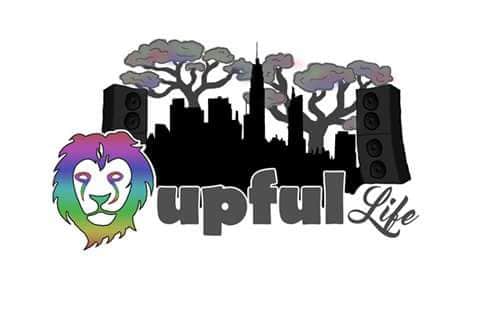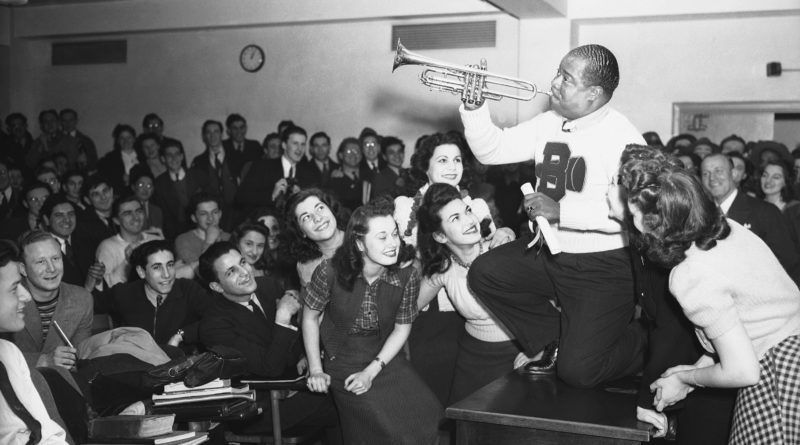CANNABIS & MUSIC | COSMICALLY INTERTWINED pt.1 [B.Getz on Herb An’ Music]
“WE ALWAYS LOOKED AT POT AS A SORT OF MEDICINE, A CHEAP DRUNK AND WITH MUCH BETTER THOUGHTS THAN ONE THAT’S FULL OF LIQUOR. I CAN GLADLY VOUCH FOR A NICE FAT STICK OF GAGE, IT RELAXES MY NERVES IF I HAVE ANY.” (c)LOUIS ARMSTRONG
original article – Herb An’ Music- The Healing of the Nations
words: B.Getz – Upful LIFE
Cannabis and music have danced in symbiotic connection since the beginning of time. Cosmically intertwined, modern music and marijuana culture have enjoyed a chromatic relationship, a defiant, righteous dalliance between these once-forbidden fruits.
At the dawn of the 1900s, in the brothels and speakeasies of Storyville, New Orleans, this marijuana matrimony was sparked ablaze. When they docked in New Orleans, sailors brought weed to the United States from Brazil and the Caribbean, and it was there where Black jazz musicians first adopted and embraced it. Aided by reefer, pioneers like Louis Armstrong and later Dizzy Gillespie experimented with time, rhythms, and improvisation- the earliest sounds of what would become known as jazz.
As legend tells it, Armstrong was accustomed to getting the jitters before his performances, until someone offered him “some gage,”a then-popular reference for marijuana.
“That was our cute little nickname for marijuana…We always looked at pot as a sort of medicine, a cheap drunk and with much better thoughts than one that’s full of liquor. I can gladly vouch for a nice fat stick of gage, it relaxes my nerves if I have any.” Louis Armstrong
Smoking a joint between sets, the great trumpet star nicknamed “Satchmo” was arrested, and Armstrong was incarcerated for nine days in the Los Angeles City Jail. In the 1930’s, authorities considered jazz music “satanic”, stemming from cannabis use by Black performers. Many people who supported marijuana prohibition often made racist, hyperbolic, patently-untrue claims about the dangers of weed, primarily to appeal to the widespread xenophobia of that period.
Numerous jazz musicians saw freedom, defiance and resistance within cannabis; this subversive musical movement continued onward into the 1960’s with the titanic artistic and cultural contributions from the likes of saxophonist extraordinaire John Coltrane.
From the embryonic sounds of the jazz era in between World Wars, through the 1950’s folk scene, to the 1960s hippie revolution, Rastafari and reggae in the next decades, and into today’s world of rock, hip-hop & pop, marijuana use and the movement behind cannabis liberation seem to have always walked stoically hand in hand, in concert and solidarity with contemporary music and the cultures that surround it.
Numerous geniuses from the music world, titans such as the great Jimi Hendrix, legendary Willie Nelson, and rabble-rousing Bob Dylan, each proudly declared that weed brought them a particular inspiration, and facilitated an abundance of creativity. Those seminal sentiments have been echoed exponentially across genres and generations ever since.
In a NYC hotel room in 1964, it was Dylan who introduced marijuana to The Beatles, not only shaping rock ‘n’ roll history, but also helping to ignite the counterculture revolution. The first peak of weed’s popularity in the music culture arrived when Beat writers like Allen Ginsberg and Ken Kesey linked up with Dylan and the Grateful Dead, considered the most notable, prominent figures in the counterculture movements of the 1960s. Dylan’s “Everybody Must Get Stoned” and Ginsberg’s “Pot Is Fun” were a sign of the times.
Fifty-plus years ago, cannabis use was not yet a widespread phenomenon in American society. Among the musicians and their fans, however, it was nearly impossible to find a community where marijuana was not at the very least tolerated, if not celebrated. All four of The Beatles, Keith Richards, Mick Jagger, members of the Dead, Jefferson Airplane, the Mama’s & the Papa’s, and dozens of other musicians flagrantly smoked pot and repeatedly advocated for normalizing cannabis.
In the 1960s, marijuana evolved from the hushed conversations and darkened alleyways into a defiant symbol of the counterculture, revolutionary ideas, the proliferation of hippies and the anti-Vietnam war movement. Ganja connected the artists of the time with their audiences, bridging the gap to understanding the essence of their art as well as the meaning behind their lyrical musings. It’s essential to recognize that cannabis represented a sign of protest against societal norms, prohibition, Nixon, ‘Nam, draconian legislation, and the banalities of life as a square.
The Woodstock generation and Haight-Ashbury hippies were emboldened to openly and fervently embrace weed as an integral part of their mindset, and way of life. Smoking ganja was emblematic of this wholesale rejection of establishment values; along with the inspired music of the day, toking resonated with their desire for a new reality, a country without anger, war and hatred, liberty free of limitation. The Summer of Love and Woodstock remain emblematic of these times; while the odyssey of the Grateful Dead continued the permeation and evolution of these communities and consciousness for decades to come.
We call ganja the “healing of the nations”, because cannabis has been a unifying force of nature between musical and geographical boundaries, different languages, beliefs, cultures, traditions, and beyond. In spite of myriad music sounds and styles that appeal to various different groups of people, one thing remains omnipresent – marijuana. Herb and it’s various synonyms, traditions, rituals and spirituality get referenced in countless classic songs, and smoked at concerts of virtually every music genre.
Modern research suggests that there is a potential neural connection between cannabis use and the appreciation of art. Marijuana makes people more receptive to music by inducing a state of greater focus and relaxation. Smoking pot often makes users able to see/hear a broader spectrum, or become more open-minded, especially within such an emotional and sensory phenomenon as music.
One of the more remarkable effects of this particular state of cannabis consciousness is a greatly enhanced appreciation of music. The effect seems to be nearly universal, and does not seem to fade with experience in the use of marijuana. Curiously, such perception of enhancement does not seem to make excessive demands of the music for it to be appreciated; it can be of any style, era or genre. During a weed session or through cannabis consciousness, music has a propensity to become more interesting in ways both surprising and profound.
These days, smoking weed is no less present, practiced nor prominent in the music scenes around the world, although the purveying attitudes towards marijuana continue changing rapidly. Next month, we’ll look back at how reggae music and hip-hop have revolutionized cannabis culture over the past several decades.
—-
Herb an’ Music, a fresh new online magazine, seeks to explore this storied history between the worlds of sound art, spirituality, and raised vibration. We intend to celebrate the people, the songs, and their stories behind the music, marijuana, and movements. Our concept is an intentional, feature-based throwback to magazine journalism and topical coverage that really digs deep into our intellect and consciousness.
With Herb an’ Music, our focus will be on artisans and musicians, movers and shakers, individuals and collectives, all connected to cannabis culture, holistic nutrition, health/wellness, the culinary arts. Plus ganja feature articles, interviews and multimedia relative to social justice work and developments in the cannabis space.
Wellness to consciousness, turntable, trumpet to nyabinghi, and from seed to a tree, Herb an’ Music will humbly offer a hub of connectivity, well of storytelling, a space for education and uplifting vibration, and portal to the healing of the nations. An online-periodical that explores the voluminous, historical, intertwining relationship between cannabis and music, and the cultures that surround.

